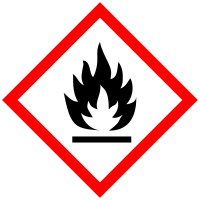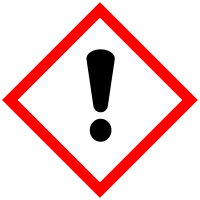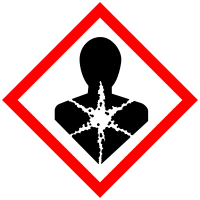
Improving Member States preparedness to face an HNS pollution of the Marine System (HNS-MS)
Carbon Disulphide
Description Top
| CAS number | 75-15-0 |
| UN number | 1131 |
| Chemical formula | CS2 |
| Standard European Behaviour Classification (SEBC) | Sinker that dissolves (SD) |
GESAMP Hazard profile
| A1 | A2 | B1 | B2 | C1 | C2 | C3 | D1 | D2 | D3 | E1 | E2 | E3 |
| 1 | NR | 3 | NI | 2 | 3 | 4 | 3A | 3 | RN | NI | SD | 3 |
Marine pollution Classification (MARPOL Annex II)
| Category | Description |
| Y | Noxious Liquid Substances which, if discharged into the sea from tank cleaning or deballasting operations, are deemed to present a hazard to either marine resources or human health or cause harm to amenities or other legitimate uses of the sea and therefore justify a limitation on the quality and quantity of the discharge into the marine environment. |
Alternate names for this chemical
Carbonbisulfide
Carbon Disulphide
Disulfure De Carbone
Carbon Disulphide
Disulfure De Carbone
Physico-chemical properties Top
| Chemical formula | CS2 | ||
| Molar mass | 76.14 [g/mol] | ||
| Critical molar volume | 0.000173 [m³/mol] | ||
| State | Liquid at 25°C and 1 atm | ||
| Fusion temperature | -112.1 [°C] | ||
| Boiling temperature | 46 [°C] | ||
| Critical temperature | 552 [°C] | ||
| Density |
|
||
| Surface tension |
|
||
| Kinematic viscosity |
|
||
| Hydrosolubility |
|
||
| Vapour pressure |
|
||
| Critical pressure | 7900000 [Pa] | ||
| Vapour density | 2.64 | ||
| Flash point (Pensky-Martens closed cup) | -30 [°C] | ||
| Lower explosivity limit (LEL) | 1.3 [%] | ||
| Upper explosivity limit (UEL) | 50 [%] | ||
| Vaporization enthalpy |
|
||
| Combustion enthalpy | 17756763 [J/Kg] | ||
| Specific heat capacity | 1003 [J/(Kg·K)] | ||
| Henry's constant | 1459.1 [mol/(m³·Pa)] |
Behaviour Top
| Log Kow | 1.84 |
| Log Koc | 1.34 |
| Hydrolysis (Half-life) | 400 days |
| Standard European Behaviour Classification (SEBC) | Sinker that dissolves (SD) |
Ecotoxicity Top
| Lowest median lethal concentration (LC50) on crustacean | 2.1 [mg/l] | |
| Lowest median lethal concentration (LC50) on fishes | 2.99 [mg/l] | |
| Highest no observed effect concentration (NOEC) on fishes | 135 [mg/l] | |
| Assessment factor (AF) |
|
|
| Predicted No Effect Concentration (PNEC) |
|
Hazards Top



Danger
Hazards statements
Physical
H225
Highly flammable liquid and vapour.
Health
H319
Causes serious eye irritation.
H332
Harmful if inhaled.
H361
Suspected of damaging fertility or the unborn child.
H372
Causes damage to organs through prolonged or repeated exposure, exposure cause the hazard:
Precautionary statements
Prevention
P201
Obtain special instructions before use.
P202
Do not handle until all safety precautions have been read and understood.
P210
Keep away from heat/sparks/open flames/hot surfaces. No smoking.
P233
Keep container tightly closed.
P240
Ground/bond container and receiving equipment.
P241
Use explosion-proof electrical/ventilating/lighting/.../equipment.
P243
Take precautionary measures against static discharge.
P261
Avoid breathing dust/fume/gas/mist/vapours/spray.
P264
Wash ... thoroughly after handling.
P270
Do no eat, drink or smoke when using this product.
P271
Use only outdoors or in a well-ventilated area.
P280
Wear protective gloves/protective clothing/eye protection/face protection.
P281
Use personal protective equipment as required.
Response
P312
Call a POISON CENTER or doctor/physician if you feel unwell.
P314
Get medical advice/attention if you feel unwell.
P304 + P340
IF INHALED: Remove victim to fresh air and keep at rest in a position comfortable for breathing.
P305 + P351 + P338
IF IN EYES: Rinse cautiously with water for several minutes. Remove contact lenses, if present and easy to do. Continue rinsing.
P308 + P313
IF exposed or concerned: Get medical advice/attention.
P337 + P313
If eye irritation persists: Get medical advice/attention.
GESAMP Top
GESAMP Hazard profile
| A1 | A2 | B1 | B2 | C1 | C2 | C3 | D1 | D2 | D3 | E1 | E2 | E3 |
| 1 | NR | 3 | NI | 2 | 3 | 4 | 3A | 3 | RN | NI | SD | 3 |
A1: Bioaccumulation
| Rating | Description |
| 1 | Very low potential to bioaccumulate |
A1a:
| Rating | Description | Criteria [mg/l] |
| 2 | Low potential to bioaccumulate | 2 ≤ Log Kow < 3 |
A1b:
| Rating | Description | Criteria |
| 1 | Very low potential to bioaccumulate | 1 ≤ BCF < 10 |
A2: Biodegradation
| Rating | Description |
| NR | Not readily biodegradable |
B1: Acute aquatic toxicity
| Rating | Description | Criteria [mg/l] |
| 3 | Moderately toxic | 1 < LC/EC/IC50 ≤ 10 |
B2: Chronic aquatic toxicity
| Rating | Description |
| NI | No Information |
C1: Acute oral toxicity
| Rating | Description | Criteria [mg/Kg] |
| 2 | Moderate | 50 < AOTE ≤ 300 |
C2: Acute dermal toxicity (skin contact)
| Rating | Description | Criteria [mg/Kg] |
| 3 | Moderately high | 50 < ADTE ≤ 200 |
C3: Acute inhalation toxicity
| Rating | Description | Criteria [mg/l] (4 hours exposure) |
| 4 | High | AITE ≤ 0.5 |
D1: Skin irritation or corrosion
| Rating | Description | Sign | GHS category |
| 3A | Corrosive | Full-thickness skin ne | Corrosive Category 1C |
D2: Eye irritation
| Rating | Description | Sign | GHS category |
| 3 | Severely irritating or corrosive | Severe conjunctoblepha | Irritant Category 1 |
D3: Long-term health effects
| Notation | Hazard endpoint | Description | GHS category |
| R | Reprotoxicity | Cause adverse effects on reproductive ability or capacity, or on the development of offspring | Category 1 for Reproductive Toxicants |
| N | Neurotoxicity | Significant changes which affect the morphology or biochemistry of central nervous system or senses |
E1: Tainting of seafood
| Rating | Description |
| NI | No Information |
E2: Behaviour of chemicals in the marine environment
| Rating | Description |
| SD | Sinker that dissolves |
E3: Interference with the use of coastal amenities
| Rating | Interference | Description | Interpretation | Warning |
| 3 | Highly objectionable | 1 is highly acutely toxic; and/or 2 is severely irritant or corrosive to skin or eyes; and/or 3 is carcinogenic, mutagenic or reprotoxic; and/or 4 is a floater or persistent floater with associated health effects | 1 C1 and/or C2 and/or C3 = 4; and/or 2 D1 or D2 = 3, 3A, 3B, or 3C; and/or 3 D3 contains C, M or R; and/or 4 E2 = F or Fp and D3 contains Ss, Sr, T, A, N, or I | Warning issued leading to the closure of amenities |
GHS Security Information



Danger
About the project
HNS-MS is a decision-support tool that Belgian and French maritime authorities as well as coastguard stations can activate in order to forecast the drift, fate and behavior of acute marine pollution by Harmful Noxious Substances (HNS) accidentally released in the marine system.
Contact us
Copyright © 2015–2024 HNS-MS Consortium
 HNS-MS has been funded by DG-ECHO under agreement ECHO/SUB/2014/693705 and runs from 1 January 2015 to 31 March 2017.
HNS-MS has been funded by DG-ECHO under agreement ECHO/SUB/2014/693705 and runs from 1 January 2015 to 31 March 2017.